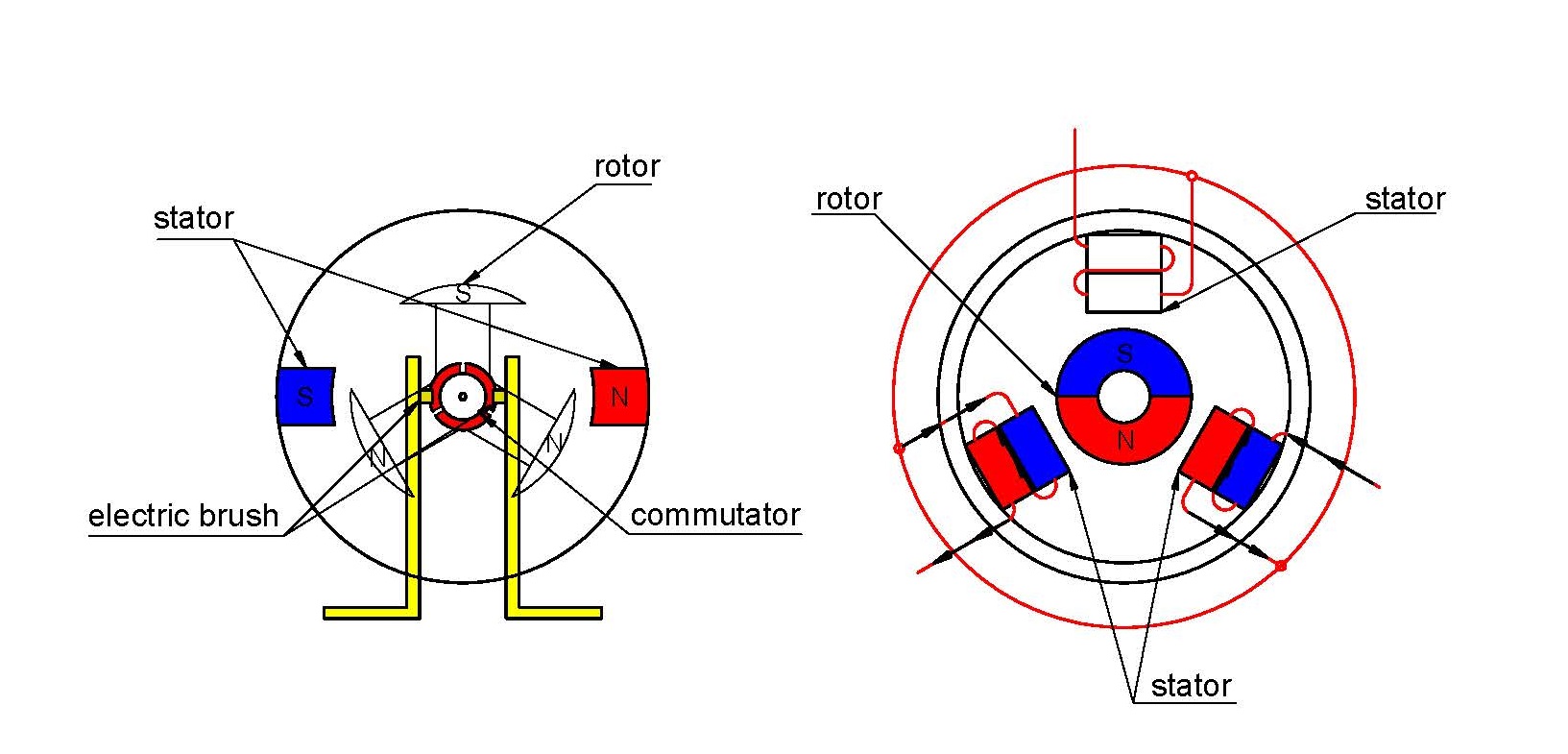
1. Generally, motors with brushes have two lead wires.
Principle of brush motor: Brushed motor uses mechanical commutation, the magnetic pole does not move and the coil rotates. When the motor is working, the coil and commutator rotate, but the magnets and carbon brushes do not rotate. The alternating changes in the direction of the coil current are completed by the phase commutator and brushes that rotate with the motor. In brush motors, this process is to arrange the two power input terminals of each group of coils into a ring in sequence, separated by insulating materials, forming a cylinder-like thing that is integrated with the motor shaft. Through two small pillars (carbon brushes) made of carbon elements, under the action of spring pressure, two points on the upper coil power input ring cylinder are pressed from two specific fixed positions to energize a set of coils.

As the motor rotates, different coils or different poles of the same coil are energized at different times, so that the N-S poles of the magnetic field generated by the coils have a suitable angle difference with the N-S poles of the nearest permanent magnet stator. Opposite poles of the magnetic fields attract each other, and the same poles of the same coil are attracted. Repulse each other, generate force, and push the motor to rotate. The carbon electrode slides on the coil terminal, like a brush brushing on the surface of an object, so it is called a carbon "brush". If they slide against each other, the carbon brushes will rub against each other, causing wear and tear. The carbon brushes need to be replaced regularly. The on-off alternation between the carbon brushes and the coil terminals will cause sparks and electromagnetic damage, which will interfere with electronic equipment.
2. Generally, electric vehicles are brushless dc motors.
The working principle of the brushless dc motors: The brushless motor adopts electronic commutation, the coil does not move, and the magnetic pole rotates. Brushless motors use a set of electronic equipment to sense the position of the permanent magnet poles through Hall elements. Based on this perception, electronic circuits are used to timely switch the direction of the current in the coil to ensure that the magnetic force in the correct direction is generated to drive the motor. . Eliminates the disadvantages of brushed motors. These circuits are motor controllers.
The controller of a brushless motor can also implement some functions that a brushed motor cannot, such as adjusting the power switching angle, braking the motor to reverse rotation, locking the motor, and using the brake signal to stop powering the motor. Nowadays, the electronic alarm lock of battery vehicles makes full use of these functions. The brushless DC motor is composed of a motor body and a driver and is a typical electromechanical integration product. Since the brushless DC motor operates in a self-controlled manner, it does not have an additional starting winding on the rotor like a synchronous motor that starts under heavy load under variable frequency speed regulation, and it will not produce oscillation or loss of synchronization when the load changes suddenly.



























